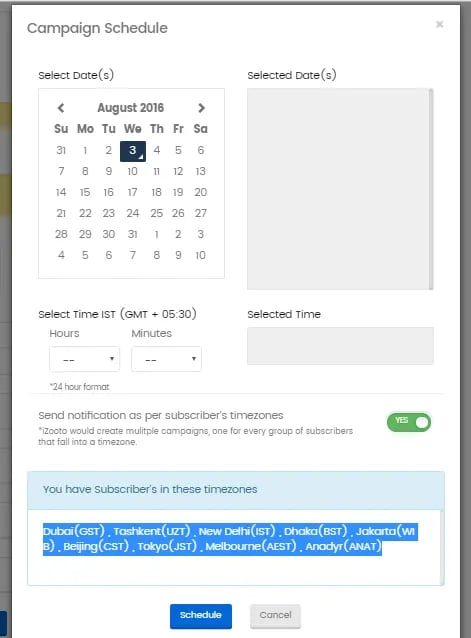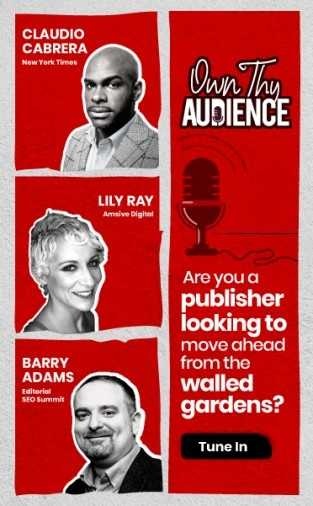Imagine you’re in the middle of an important meeting, and your phone suddenly lights up with a push notification that is irrelevant at the moment. The frustration and distraction caused by such untimely interruptions can leave you frustrated, and you may end up unsubscribing to these updates.
This is one of many similar scenarios which can annoy your users when you time push notifications inappropriately. Helplama reports that 43% of users disable notifications if they receive 2-5 push updates per week. However, 61% state that if notifications are relevant to their preferences their app usability will increase or stay the same.
Hence, users will perceive your notifications as intrusive or helpful based on the updates, personalization, time, and relevance.
If you’re a publisher looking to increase your push notification CTR and engagement, your schedule and timing can help you bump it up.. This blog will delve into the critical aspect of timing push notifications to help you generate traffic and visibility to your site.
Best Practices to Time Push Notifications for Higher CTR & Engagement
You may have heard that sending push notifications during the end of the day (8:00 P.M - 11:00 P.M) or early mornings (7 A.M - 9 A.M) is an ideal time to begin with.
While it can be considered as industry best practice, understanding your unique audience, analyzing their behavior and preferences will help you find a schedule that generates desired results for your publication.
Here are a few ways to find the best time for your publication to send push notifications.
1. Know Your Readers
Sending push notifications when your target readers are active increases the likelihood of driving visitors to your site or app. Tools such as Google Analytics help you understand at which period of the day your site receives the maximum traffic.
If you have a vast reader base with different interests, segmenting them based on demographics such as age, gender, or preferences can help you send push notifications to different groups at relevant times.
For Instance: Young readers may be more active online during the evening, while older age groups engage more during the daytime, such as early morning. Sending push notifications to these two different sets of audiences at the same time may not be effective. Hence, audience segmentation plays a crucial role in finding the best time to send push notifications.
Further, you can employ these additional strategies to find the peak active time of your readers to make data-driven decisions
-
A/B Testing: Conducting A/B tests by sending notifications at different times to various sets of audiences and analyzing the open rates can help determine the optimal delivery time.
-
User Surveys: Running user surveys to inquire about their preferred time for receiving news updates can provide valuable insights.
-
Historical Data Analysis: Examining historical data on user engagement and interaction times can reveal patterns and trends that indicate the most active periods.
Tailoring push notification timing to these patterns lets you strategically coincide with the peak times and schedule push notifications accordingly to boost your brand reach and impact.
2. The Science of Timing
Push notifications yield higher engagement rates if sent during periods when users are less occupied, such as early morning or evening. This aligns with the natural ebb and flow of individuals' daily routines, as they are more likely to engage with content during leisure hours.
In its 2023 report, Businessofapps listed the click-through rates of push notifications sent at different time periods. Comparatively, the push notification sent at 11 P.M received 11.4% click-through-rate. Meanwhile, notifications sent at 6:00 P.M. received the lowest CTR of 6.2%.
Here’s a complete list of timing and respective CTR.
|
Timing |
CTR |
|
8:00 A.M |
6.4% |
|
9:00 A.M |
6.4% |
|
10:00 A.M |
6.6% |
|
11:00 A.M |
6.7% |
|
12:00 A.M |
7.9% |
|
1:00 P.M |
8.2% |
|
2:00 P.M |
7.7% |
|
3:00 P.M |
6.3% |
|
4:00 P.M |
6.6% |
|
5:00 P.M |
6.6% |
|
6:00 P.M |
6.2% |
|
7:00 P.M |
7.8% |
|
8:00 P.M |
8.1% |
|
9:00 P.M |
9.2% |
|
10:00 P.M |
10.9% |
|
11:00 P.M |
11.4% |
|
12:00 A.M |
9.4% |
Additionally, tailoring push notification schedules to accommodate various time zones ensures that your readers receive notifications at times convenient to them, fostering a global sense of connectivity.
For example, imagine a news publisher sending an event update to their global audience without considering time differences. The notification goes out at 3:00 PM GMT, which is the ideal time for their European subscribers, but unfortunately, it means that their Asian audience is fast asleep at that hour. This oversight will cost a significant portion of their global audience, leading to missed engagement opportunities and a lack of inclusivity in their notification strategy.
To help publishers avoid such situations, iZooto offers a customized notification scheduler which lets you schedule each of your campaigns to different time zones of subscribers.

Once you schedule a notification using iZooto, individual campaigns will be automatically created for all the selected time zones, allowing you to customize the message and other elements to personalize it for the target readers.
3. Content Relevance and Timing
The nature of the content being delivered can influence the performance of your push notification. Aligning the type of news with appropriate timing determines how your readers engage with your content or opt out..
For instance, A news publisher covering sports should send out push notifications as soon as a major game-changing event occurs, such as a goal in a soccer match or a significant injury during a game. Conversely, feature stories and in-depth analyses are best delivered during periods when users have the time and inclination to engage with longer-form content, such as evenings or weekends.
Knowing your audience preferences will help you find which type of content is relevant to them and decide the frequency of updates.
Ultimately, aligning your content strategy with the rhythms of your audience's daily lives can significantly impact engagement levels and foster a stronger connection with your brand.
Audience segmentation features on iZooto can help you create custom segments and categorize your audience based on multiple criteria. You can also automate the process of sending push notifications to different groups by scheduling the updates prior.
4. Personalize Push Notifications
Personalized push notifications resonate with readers, deliver relevant content, and drive user engagement. An initial push notification paired with a follow-up is a powerful way to leverage the existing interest of the user.
For instance:
After sending an initial push notification about an exclusive political development, you can follow up with additional articles relevant to the event tailored specifically for those who opened the initial notification.
This targeted approach ensures that subsequent notifications are directed at individuals who have shown interest, thereby increasing the likelihood of higher CTRs and engagement.
Push notification providers offer these features to help you create segmented audiences and send follow-up notifications relevant to that running campaign.
By tailoring notifications based on a user’s previous engagement or reaction, publishers can create a more engaging and personalized experience for their audience, ultimately leading to improved CTRs and increased website traffic.
To help you make data-driven decisions about personalization, iZooto brings all your historical data under one tab. You can find which notification received the maximum CTR and engagement, traffic sources, data showing segment-based performance, and more along with Google Analytics integration.
Also read:
Publisher's Guide to Audience Segmentation for Push Notification
Common Problems and Their Solutions While Sending Push Notification
1. Focusing Solely on Peak Hours
Over-reliance on sending push notifications during peak hours can lead to increased competition and reduced visibility in users' notification feeds. Additionally, users may experience notification fatigue during these times, resulting in lower engagement.
Solution:
-
Diversify the timing of push notifications to reach users at different points throughout the day, considering their routines and habits based on the demographics data.
-
Monitor user response and engagement metrics to identify optimal times for sending notifications, which may not necessarily align with traditional peak hours.
-
Consider sending notifications during non-peak hours to stand out in users' feeds and capture their attention when competition is lower.
2. Neglecting Time Zone Differences
Neglecting time zone differences can result in users receiving notifications at inconvenient or inappropriate times, leading to decreased engagement and potential frustration.
Solution:
-
Utilize geolocation data to deliver notifications based on users' specific time zones, ensuring that notifications are timely and relevant.
-
Implementing a scheduling system such as iZooto local time notification scheduler will help you take time zone differences into account, allowing notifications to be sent at an optimal time for users who reside in different parts of the world.
3. Inconsistent Timing
Inconsistency in the timing of push notifications can lead to confusion and reduced user anticipation, impacting overall engagement and CTR.
Solution:
-
Establish a consistent schedule for sending push notifications to create a sense of anticipation and reliability among users.
-
Communicate the frequency and timing of notifications to users, allowing them to anticipate and prepare for updates from your platform.
4. Failure to Adapt to User Behavior
Failing to adapt the timing of push notifications based on user behavior and interactions can result in missed engagement opportunities and reduce the campaign's overall effectiveness.
Solution:
-
Utilize real-time user behaviour data to adjust the timing of push notifications based on when users are most active and responsive.
-
Implement machine learning algorithms to predict the optimal timing for each user based on their historical interactions and behavior patterns.
-
Continuously analyze user response to notifications and adapt the timing based on changes in user behavior and preferences.
5. Overloading Users with Notifications
Sending an excessive number of push notifications within a short time frame can lead to notification fatigue and disengagement from users.
Solution:
-
Implement a frequency capping mechanism to limit the number of notifications users receive within a specific time period, preventing overload and fatigue.
-
Prioritize the delivery of relevant and timely notifications, avoiding unnecessary or repetitive updates that may contribute to user fatigue.
-
Monitor user opt-out rates and feedback to gauge the impact of notification frequency on user satisfaction and engagement.
6. Neglecting the Content Relevance
Sending push notifications with irrelevant or outdated content can decrease user interest and engagement, impacting CTR and overall effectiveness.
Solution:
-
Prioritize the delivery of timely and relevant content within push notifications to ensure that users find the updates valuable and engaging.
-
Implement personalized content recommendations based on user preferences and behavior to increase the relevance of push notifications.
-
Regularly review and update the content strategy for push notifications to maintain relevance and align with user interests and current events.
7. Lack of Clear Call-to-Action
Neglecting to include a clear and compelling call-to-action within push notifications can result in reduced user engagement and CTR, limiting the campaign's impact.
Solution:
-
Incorporate a concise and actionable call-to-action within each push notification to guide users toward the desired interaction or conversion.
-
Utilize dynamic content to personalize the call-to-action based on user preferences and behavior, increasing its relevance and effectiveness.
-
A/B test different call-to-action approaches to identify the most compelling strategies for driving user engagement.
Takeaway
By continually refining your push notification strategies, prioritizing audience-centric approaches, and remaining open to innovation, you can elevate the effectiveness of your notifications and ultimately drive better engagement with your content.
Ensure you’re using action-driving CTAs, personalizing your message, and segmenting your audience effectively when experimenting with the timing. Well-crafted notifications sent at the right time will ultimately help you attract more traffic and audience engagement






